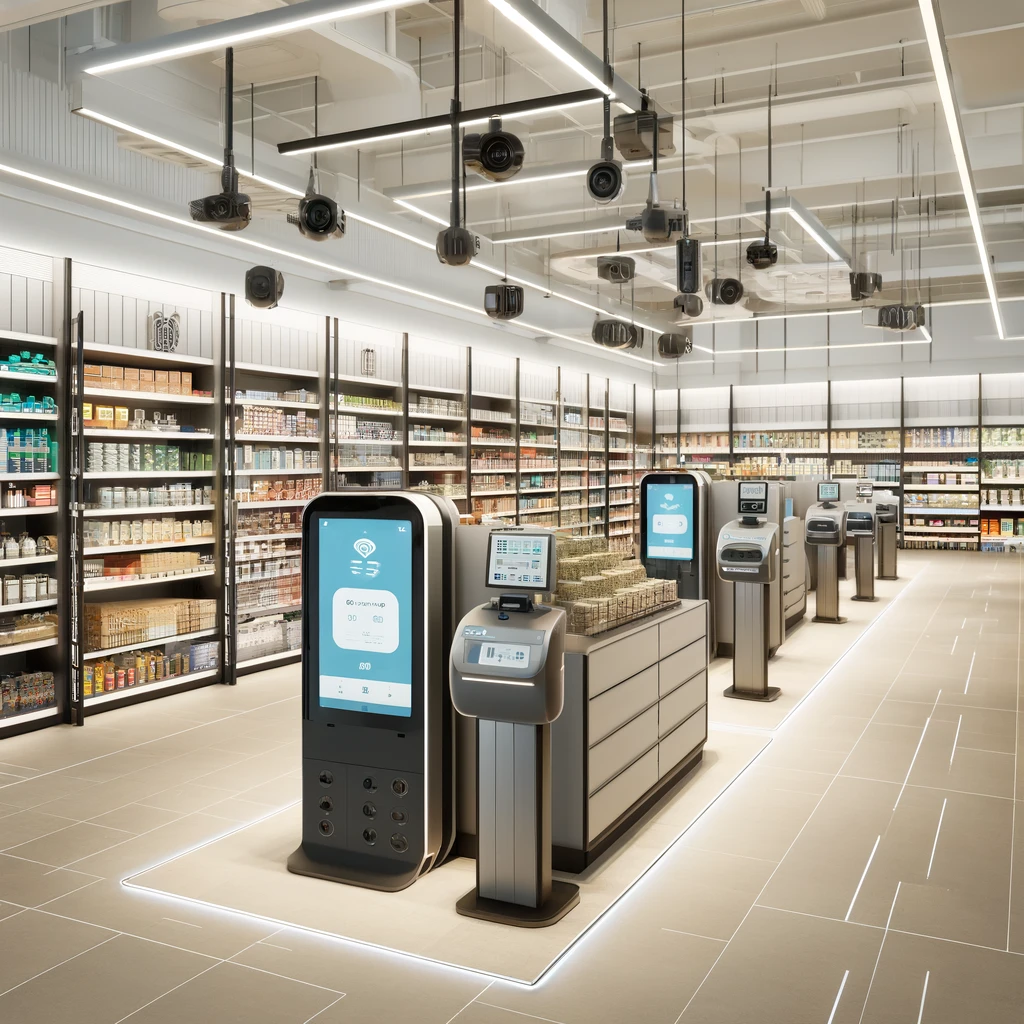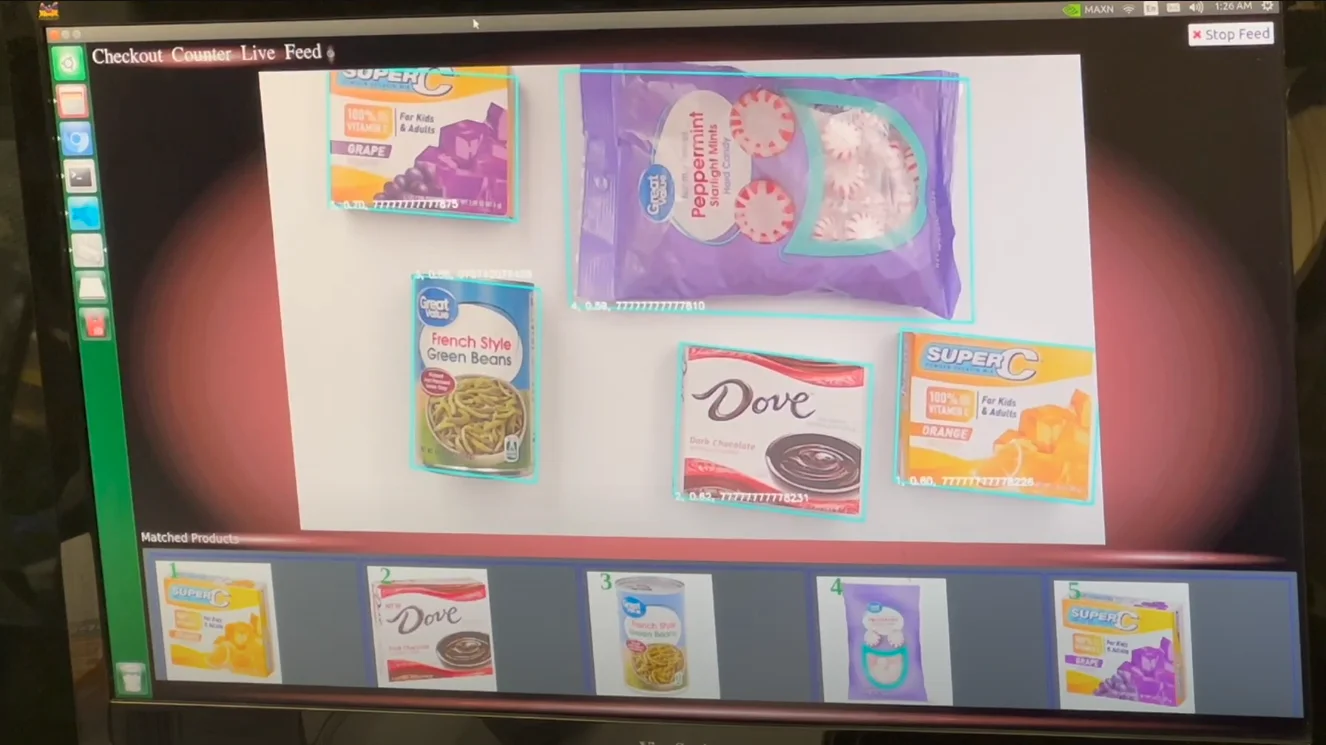In the first two posts of our series, we explored both the technical challenges involved in implementing artificial intelligence (AI) computer vision in retail, as well as the operational challenges retailers face. In this post, we’ll look more closely at the issues that can crop up during product enrollment (both initial and ongoing updates), expanding product catalog sizes, and scaling across multiple storefronts.
Before rolling out an AI computer vision solution, retailers should have tested and refined their AI computer vision model to ensure accurate product recognition in nearly any conditions, which product managers usually explore and resolve in a lab environment. Once product managers have resolved that initial set of challenges, it’s important to understand the necessary steps to make that solution usable, taking what they learned from the lab and applying it to real world environments. In other words, how will they enroll all the products in their catalog, keep their product catalog up to date, and scale that product catalog across stores.
Enrolling products in a computer vision system
As product managers consider how to integrate computer vision-enabled product recognition into retail operations, initial product enrollment becomes the next barrier to overcome. It’s a significant time and resource commitment, so understanding the requirements of the computer vision solution is as essential to success as ensuring that it can recognize products quickly and accurately.
Creating a comprehensive catalog of a store’s products typically requires the following considerations:
- Quality, quantity, and type of images: For many computer vision products, accurate recognition of any given product across a wide variety of conditions may require the computer vision system to be trained against all anticipated scenarios. That could mean, for example, multiple images of each product from different angles (front, back, and sides at a minimum), taken in different lighting conditions, often in high resolution or using specific formats taken with special equipment. Those requirements impact the number of images you’ll need and how they need to be delivered. Make sure you understand whether your computer vision solutions require special lighting or pictures from multiple angles to identify the product. This method takes a lot more time to enroll products than AI solutions that use zero-shot models. Zero shot models are able to use a single image to enroll a new product, with zero additional model training.
- Level of Enrollment: Another area to review is whether your computer vision solution enables global product enrollment or whether it requires either full enrollment or fine-tuning at the individual store level. Solutions that rely on multiple images to identify products under different conditions run a higher risk of overtraining the model and limiting flexibility later. This manifests in a need to (at a minimum) be adjusted for each individual store environment potentially even requiring new product enrollment photos that reflect a specific store environment.
- Product details: Some computer vision solutions require individual stores to provide a detailed description of each product, including product name and brand, model number (if applicable), Universal Product Code (UPC) or other unique product identifier, and features and specifications (such as material, size, color variations, and so on) in order to identify products accurately.
- Data Labeling: In some cases, AI computer vision solutions require pre-labeled training data for each product, which involves manually marking specific regions of interest in the product images. For example, labeling the sides of a box or the UPC code on the back of a package. While some AI systems need pre-labeled data to learn to identify each product more accurately, others might use zero-shot models to recognize products accurately without requiring such additional product details or any additional model training.
Other potential requirements include category information (for example, clothing, electronics, furniture), 3D models of products, or a separate set of test images to evaluate the model’s performance. Traditional computer vision solutions that need a lot of details to accurately and quickly identify products are more time consuming to set up and maintain.
Managing ongoing product enrollment
The initial product enrollment phase can be time and resource intensive, but product enrollment isn’t a one-time event. Retail product lines are dynamic; product branding changes frequently, and stores add new products regularly, necessitating updates to the computer vision system. Computer vision solutions that use zero-shot models make it faster and easier to add new products, while those that require multiple image angles and special lighting require a greater time investment to maintain the catalog.
Solutions that need images from each store environment create significant operational challenges for maintaining that catalog. And, of course, the size of the product catalog can significantly impact the amount of product enrollment time required, making roll out and maintenance another challenge to successfully using the solution. Furthermore, many traditional AI solutions required additional model training when enrolling new products, making enrollment that much more expensive and time consuming.
Dealing with product catalog size
The size of a retailer’s product catalog varies dramatically, from a few thousand SKUs (Stock Keeping Units) in small convenience stores to well over a 100,000in mass-market retailers, such as Target, Walmart, and Best Buy. The performance of a computer vision solution often correlates to the size of the product catalog; it’s much harder to maintain product identification accuracy and speed as the catalog size increases. Product managers need to understand how efficiently the computer vision solution handles large catalogs.
Catalog Size Considerations
- Increased Training Time: Training an AI on a massive dataset can be computationally expensive and time-consuming, requiring more time to build the product catalog, enroll new products, or make product changes.
- Potential for Confusion: With a vast number of products, there’s a higher chance of the AI misidentifying an item if it resembles another product in the catalog closely, especially if the real-world scanning environment doesn’t closely match the image in the product catalog.
- Computational Demands: Running image recognition against a large catalog can require significant computing power, impacting the system’s performance and scalability.
- Catalog Location: Product catalogs stored in the cloud take longer to access the right product in the catalog, particularly when internet connections are slow. Computer vision solutions delivered via edge computing process information more quickly and less networking overhead, and are not impacted by connectivity issues.
- Product Scaling: Retail AI computer vision solutions must perform effectively when the scale of operations changes or increases, including when the number of stores expands, the range of products increases, or more customers visit the stores (as is likely during tax free events or holiday shopping seasons). Regardless of how many more products are added to the catalog or how subtle the differences are between individual products, AI computer vision must be responsive and accurate.
No product manager determines the size of the product catalog based on the limitations of the AI computer vision solution; they choose the solution that fits their business needs. What works for a large retail location may be cost-prohibitive for a smaller store in terms of employee time, cameras, lighting requirements, and additional equipment. Stores with a smaller catalog may have less difficulty maintaining it because fewer products change on a day to day basis — but they also have less staff and fewer in-house IT resources. Zero-shot models minimize the burden of building and maintaining a product catalog, making them an excellent option for both large and small stores.
Scaling across multiple stores
It’s not just about the product catalog, however. Product managers need to keep in mind how many stores the computer vision solution will be deployed in. Many computer vision solutions require algorithm adjustments specific to each store’s conditions, adding more complexity to deployment considerations. There may be additional overhead, such as the time and resources needed to retrain algorithms store by store, add new products based on individual store requirements, or capture new images based on the unique conditions in each location. Product managers planning deployment across multiple locations must consider how these requirements influence the overall implementation cost and timeline.
Implementation strategies
To navigate these challenges in implementing AI computer vision, product managers need a detailed plan that accounts for the initial product enrollment, catalog size, the specific needs of each store, and how to manage ongoing product enrollment. In addition, different types of retailers have diverse considerations. For example, a convenience store retailer doesn’t need to worry about managing a large product catalog, but they do need to think about the value of global enrollment and management given the lack of staff in each location. Even in big box retailers, staff shouldn’t need extensive training to use the new system. Indeed, it should be easy for front end customer service and assistance employees to manage product enrollment changes, while the in-house IT team must be able to address any operational changes necessary to deploy AI computer vision technology.
Solving product catalog challenges
Integrating AI computer vision into retail operations is an opportunity to improve efficiency, accuracy, and customer experience in retail businesses. Understanding the different vectors of scalability required on an ongoing basis each come with their own challenges, specifically in terms of the number of products, stores, and changes required. Product managers at diverse retailers will weigh each of those vectors differently, based on meeting their unique business needs.
AI computer vision offers retailers many potential benefits, from rolling out more user-friendly self-checkout systems to making traditional check out easier and from preventing shrink to managing inventory. To deliver on those promises, AI computer vision must be accurate, scalable, flexible, and simple to use.




